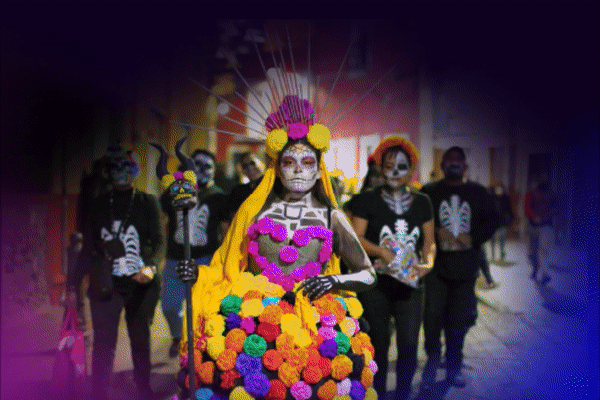Día de los Muertos, or Day of the Dead, is a celebration that honors the dead and their return to the world of the living. It is a blending of pre-Columbian rituals and European traditions that celebrates both the richness of life and the inevitability of death. Celebrations vary across regions in Mexico, with families often visiting cemeteries and constructing altars in their homes to honor their deceased loved ones. Day of the Dead is observed on November 1st and 2nd in Central, South, and North America, corresponding to the Catholic feast days of All Saints and All Souls. Mexico City, Oaxaca, and San Antonio are known for their grand celebrations of the holiday.
The origins of Día de los Muertos can be traced back 3,000 years to the death rituals of the Nahua people of Mesoamerica, including the Aztecs. The Nahua saw the universe as cyclical and humanity as a duality between life and death. Death was viewed by the Nahua as a part of life, with the soul embarking on a journey to the underworld upon death. Over time, the death rituals of the Nahua became aligned with the Catholic feast days of All Saints and All Souls, with the essence of death as a celebratory and cyclical event remaining pertinent in the observation of Día de los Muertos.
Day of the Dead traditions include constructing altars known as ofrendas to honor the deceased and guide their spirits home. Offerings placed on these altars can include photos of loved ones, food, water, alcohol, flowers, and bread of the dead. Paper decorations symbolize the frangible nature of life, while the colorful flowers and candles aim to guide ancestral spirits. The preparations for Día de los Muertos are done with great care to ensure the dead are welcomed and satisfied, with belief in their power to deliver prosperity based on the offerings made.
Día de los Muertos is often confused with Halloween, but it is a distinct celebration with its origins deeply rooted in Mexican culture. Conflating the two holidays and commercializing Day of the Dead can be seen as cultural appropriation and disrespectful to the traditions behind the holiday. Observers and appreciators of Día de los Muertos should take care to educate themselves, observe with respect, and spend money carefully to ensure that the traditions are honored and celebrated in an authentic manner. By engaging thoughtfully with the holiday and investigating one’s ancestral traditions, individuals can pay homage to the sacred cycle of existence that lies at the heart of Día de los Muertos.
It is essential to understand the significance and history of Día de los Muertos and appreciate the cultural depth and meanings behind the traditions associated with the holiday. By respecting the roots of the celebration and engaging with it in a thoughtful and reverential manner, individuals can honor the sacred cycle of life and death that Día de los Muertos represents. Cultural appreciation of the holiday should focus on education, respect, and mindful engagement with the traditions to ensure that the essence and significance of Día de los Muertos are preserved and honored.













